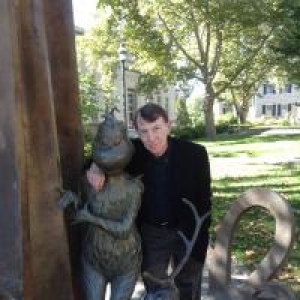Reading and Meditation
Written by John Lyons, Commonwealth Professor of French, College and Graduate School of Arts and Sciences

National Gallery, London
Each fall, thousands of excited, confused, worried, rushed first-year students arrive at the University, usually happy, but haunted by a distracting urgency. It seems that everything has to be done at once and that a whole host of opportunities will forever and unalterably change the course of their life. The right organization, the right major, the right medical school or the Comm School, the right friends, the right professors, the right course section—all these things seem to require the most urgent action. Students rush from meeting to meeting, placement exam to open house, clutching their phones and texting.
If only things could be slowed down. If only life could be lived moment by moment, and if tomorrow could…well, just be tomorrow. If only students could be free to welcome the delightful discoveries that come unbidden. Three times now I’ve taught a COLA—an advising course, combining nitty-gritty and yet vital technical information (e.g., how to manage enrollment waitlists), on one hand, with substantial, needs-to-be-absorbed-slowly writings that have no immediate application but could be very valuable in the long term. And that is, simply put, the crux of the course. To step away from the immediate and into a realm of thought where time passes slowly, or rather seems to stop. And to give each moment of life the attention that it merits.
This approach to helping first-year students comes from my own experience that reading, writing, and mindfulness are closely linked and also from my study of the meditative tradition of early modern Europe. When I considered teaching a COLA for the first time, the course came together around the image of Mary Magdalen reading. Traditionally Mary Magdalen is an exemplary figure of meditation. Some legends even claim—surely as a metaphor—that she levitated when she was deep in contemplation. Such an immersive experience of thought is one of the things most lacking in a world of what my students call FOMO—the fear of missing out, the need to be in constant touch with a social network, with the latest news and the latest trends. Against the urgency of the short-term, thoughtful writing and thoughtful reading offer a respite that counters the anxiety of the first-year experience.
The main text for our course is Jon Kabat-Zinn’s Wherever You Go, There You Are, but shorter readings include texts from Marcus Aurelius, John Donne, Thomas Merton, and Adam Alter. Only during the third offering of the course did I have the courage to begin each of our weekly sessions with a brief group meditation. To my own amazement it worked! A room of twenty people, sitting in silence together and letting go of time, practicing the joyful discipline of attention. One of the other things that we have done during each offering of the COLA is explore places on grounds that are conducive to quiet reading and writing. These include libraries but also gardens. Not surprisingly, without the initiative provided by an assignment, first-year students do not discover places like the music library in Old Cabell Hall, the art library or the stacks in the science-engineering library.
Like all COLAs, this opportunity to see students on a weekly basis during their first semester lets me to get to know them and seems to me far, far better than only having a fifteen-minute appointment with them each semester. But it is also a reminder to me that the simplest things are the most important, if we learn to give them the proper attention.
- UVA Club of Pasadena: Hoo-liday Party
- UVA Club of Middle Tennessee: Hoo-liday Party
- UVA Club of Culpeper: Hoo-liday Party
